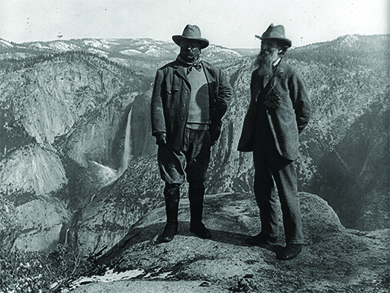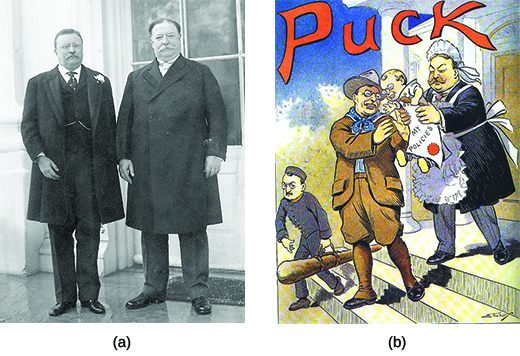| << Chapter < Page | Chapter >> Page > |
Another key element of Roosevelt’s Progressivism was the protection of public land ( [link] ). Roosevelt was a longtime outdoorsman, with an interest that went back to his childhood and college days, as well as his time cattle ranching in the West, and he chose to appoint his good friend Gifford Pinchot as the country’s first chief of the newly created U.S. Forestry Service. Under Pinchot’s supervision, the department carved out several nature habitats on federal land in order to preserve the nation’s environmental beauty and protect it from development or commercial use. Apart from national parks like Oregon’s Crater Lake or Colorado’s Mesa Verde, and monuments designed for preservation, Roosevelt conserved public land for regulated use for future generations. To this day, the 150 national forests created under Roosevelt’s stewardship carry the slogan “land of many uses.” In all, Roosevelt established eighteen national monuments, fifty-one federal bird preserves, five national parks, and over one hundred fifty national forests, which amounted to about 230 million acres of public land.

In his second term in office, Roosevelt signed legislation on Progressive issues such as factory inspections, child labor, and business regulation. He urged the passage of the Elkins Act of 1903 and the Hepburn Act of 1906, both of which strengthened the position of the Interstate Commerce Commission to regulate railroad prices. These laws also extended the Commission’s authority to regulate interstate transportation on bridges, ferries, and even oil pipelines.
As the 1908 election approached, Roosevelt was at the height of popularity among the American public, if not among the big businesses and conservative leaders of his own Republican Party. Nonetheless, he promised on the night of his reelection in 1904 that he would not seek a third term. Roosevelt stepped aside as the election approached, but he did hand-pick a successor—Secretary of War and former Governor General of the Philippines William Howard Taft of Ohio—a personal friend who, he assured the American public, would continue the path of the “Square Deal” ( [link] ). With such a ringing endorsement, Taft easily won the 1908 presidential election, defeating three-time Democratic presidential nominee William Jennings Bryan, whose ideas on taxes and corporate regulations reminded voters of the more far-reaching Populist platforms of Bryan’s past candidacies.


Notification Switch
Would you like to follow the 'U.s. history' conversation and receive update notifications?